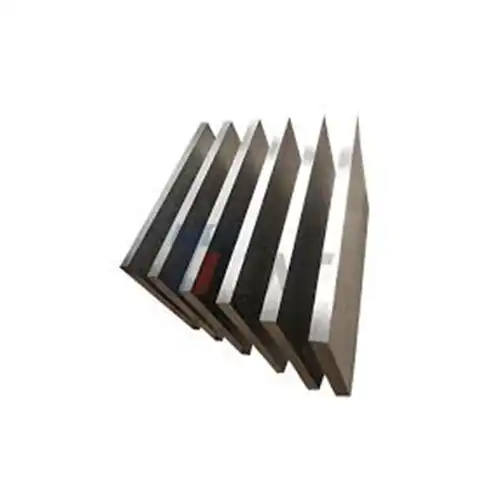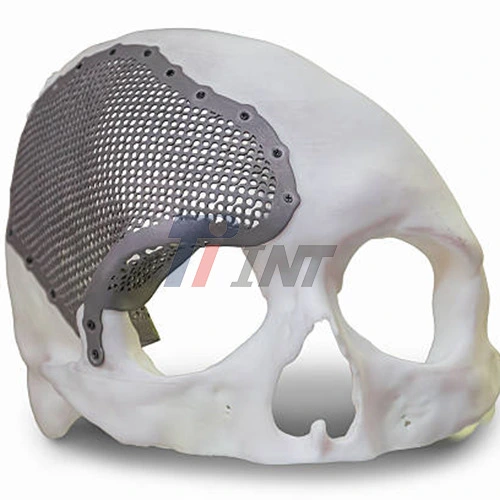Can You Feel a Titanium Plate After Cranioplasty?
 2025-10-10 08:46:53
View:389
2025-10-10 08:46:53
View:389Can You Feel a Titanium Plate After Cranioplasty? After undergoing a cranioplasty procedure involving a titanium plate, many patients wonder if they'll be able to feel the implant. The answer is: it depends. While some individuals may experience a slight sensation of the plate's presence, particularly in the early stages of recovery, most patients report that they cannot feel the titanium plate once healing is complete. The advanced design and materials used in modern cranioplasty titanium plates, such as those produced by leading manufacturers like INT Medical Titanium, prioritize patient comfort and seamless integration with the skull structure.
|
|
|
Understanding Cranioplasty and Titanium Plates
Cranioplasty is a surgical procedure aimed at repairing defects or deformities in the skull. It's often performed following traumatic brain injuries, tumor removals, or other neurological surgeries that require access to the brain. Titanium plates have become a popular choice for cranioplasty due to their numerous advantages:
Benefits of Titanium Plates in Cranioplasty
- Biocompatibility: Titanium is well-tolerated by the human body, reducing the risk of rejection or adverse reactions.
- Durability: These plates are designed to withstand the stresses of daily life and protect the brain long-term.
- Lightweight: Despite their strength, titanium plates add minimal weight to the skull structure.
- Corrosion-resistant: Titanium resists degradation, ensuring longevity of the implant.
- Customizable: Plates can be tailored to fit each patient's unique skull contours precisely.
The Cranioplasty Procedure
During a cranioplasty, the surgeon carefully places the cranioplasty titanium plates over the skull defect. The plate is secured using specialized screws or other fixation methods. The goal is to restore the skull's protective function and improve aesthetics. Modern surgical techniques aim to minimize tissue disruption and promote rapid healing.
Factors Influencing Plate Sensation
Plate Design and Placement
The design of the plate plays a crucial role in patient comfort. High-quality titanium plates, like those produced by INT Medical Titanium, are engineered with a focus on patient comfort. These plates feature:
- Smooth edges to prevent irritation of surrounding tissues
- Thin profiles that closely match the skull's natural contours
- Customized shapes to ensure a precise fit for each patient
Proper placement by skilled surgeons also minimizes the chances of the patient feeling the cranioplasty titanium plate post-surgery.
Healing and Adaptation
The body's healing process and its ability to adapt to the presence of the titanium plate significantly influence sensation.
- Initial healing period: Some patients may be more aware of the plate immediately after surgery due to swelling and sensitivity.
- Long-term adaptation: Over time, the body typically adjusts to the presence of the plate, reducing awareness of its presence.
- Tissue integration: As surrounding tissues heal and integrate with the plate, any initial sensations often diminish.
Individual Variability
Patient experiences can vary based on:
- Skin thickness over the implant site
- Individual sensitivity levels
- The extent of the original skull defect
- Overall health and healing capacity
Managing Post-Cranioplasty Sensations
Open and ongoing communication with your healthcare team is essential for managing sensations related to cranioplasty titanium plates. Discussing any discomfort or unusual feelings allows your surgeon or medical professional to determine whether these sensations are part of the normal healing process or require further attention. They can provide guidance, reassurance, and practical solutions to help alleviate discomfort. Regular check-ins and honest dialogue ensure that patients feel supported, confident, and well-informed throughout their recovery, making adaptation to the titanium plate a smoother and less stressful experience.
Adaptation Techniques
Patients can adopt several strategies to adjust to the presence of a cranioplasty titanium plate. Gentle massage around the affected area can help desensitize nerve endings over time, reducing heightened sensitivity. Mindfulness practices, relaxation exercises, and focused breathing techniques help shift attention away from the sensations, lowering perceived discomfort. Gradual exposure to different textures, temperatures, and pressures in daily activities also aids adaptation. Consistent practice of these techniques empowers patients to regain comfort and confidence, allowing the titanium plate to feel less intrusive in everyday life.
Long-term Considerations
Over time, most patients notice that awareness of the titanium plate gradually decreases. Routine follow-up appointments are crucial to monitor proper healing, plate integration, and overall recovery. Any persistent or unusual sensations should be reported promptly to a healthcare provider to rule out complications. While some degree of awareness may continue, it usually does not interfere with daily activities or quality of life. Maintaining realistic expectations and adhering to medical guidance helps patients achieve optimal long-term outcomes and fully adapt to living with the implant.
Conclusion
Cranioplasty with cranioplasty titanium plates is a vital procedure that restores skull integrity and protects the brain. While some patients may initially be aware of the plate's presence, the majority find that this sensation diminishes over time. The use of high-quality, biocompatible titanium plates, such as those produced by INT Medical Titanium, significantly contributes to patient comfort and successful outcomes. These plates are designed with advanced features like excellent fatigue resistance, customizability, and a high strength-to-weight ratio, ensuring optimal integration and minimal long-term sensation.
For those considering or recovering from cranioplasty, it's essential to maintain open communication with your healthcare team and trust in the body's remarkable ability to adapt. If you have questions about titanium plates for cranioplasty or other medical applications, don't hesitate to reach out to experts in the field. For more information on INT Medical Titanium's products and their applications in cranioplasty, contact us at export@tiint.com.
FAQs
How long does it take to fully recover from cranioplasty?
Recovery times vary, but most patients can return to normal activities within 6-8 weeks. Complete healing and adaptation may take several months.
Can titanium plates trigger metal detectors?
Generally, titanium plates do not trigger metal detectors due to their non-ferromagnetic properties.
Are there alternatives to titanium plates for cranioplasty?
Yes, alternatives include autologous bone grafts, synthetic materials, and 3D-printed implants. However, titanium remains a popular choice due to its excellent properties.
How long do titanium cranioplasty plates last?
High-quality titanium plates, like those from INT Medical Titanium, are designed to last a lifetime in most cases, barring unforeseen circumstances or complications.
References
1. Honeybul S, Morrison DA, Ho KM, Lind CR, Geelhoed E. A randomized controlled trial comparing autologous cranioplasty with custom-made titanium cranioplasty. J Neurosurg. 2017;126(1):81-90.
2. Alkhaibary A, Alharbi A, Alnefaie N, Almubarak AO, Aloraidi A, Khairy S. Cranioplasty: A Comprehensive Review of the History, Materials, Surgical Aspects, and Complications. World Neurosurg. 2020;139:445-452.
3. Cabraja M, Klein M, Lehmann TN. Long-term results following titanium cranioplasty of large skull defects. Neurosurg Focus. 2009;26(6):E10.
4. Kim BJ, Hong KS, Park KJ, Park DH, Chung YG, Kang SH. Customized cranioplasty implants using three-dimensional printers and polymethyl-methacrylate casting. J Korean Neurosurg Soc. 2012;52(6):541-546.
5. Schwartz MS, Rengachary SS. Cranioplasty: Techniques and Materials. In: Benzel EC, ed. Spine Surgery: Techniques, Complication Avoidance, and Management. 4th ed. Elsevier; 2017:1819-1827.












